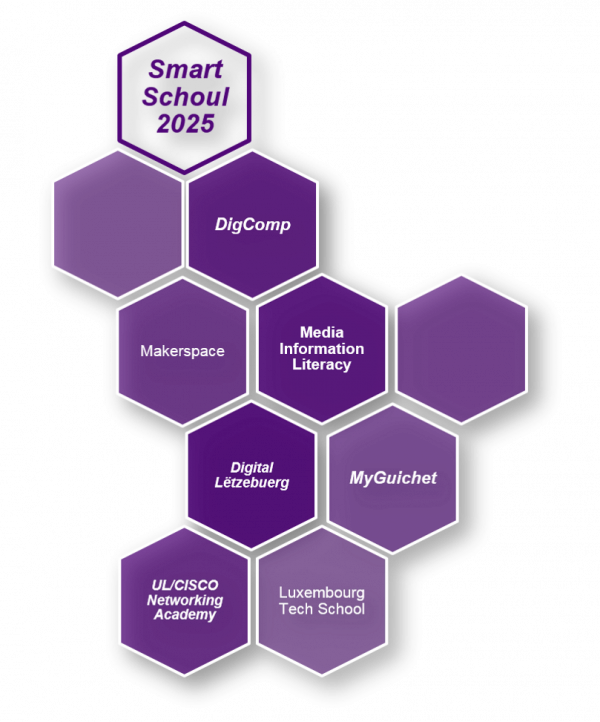SnT has partnered with the Ministry of National Education represented by its department for the Coordination of Educational and Technological Research and Innovation SCRIPT and the Lycée Edward Steichen à Clervaux (LESC) in defining the Smart Schoul 2025 project. The goal of this project is to create a fertile environment for pupils to be motivated to participate in designing digital tools and solutions.
Background
Being exposed to computer science at an early age could potentially trigger the switch and inspire a digital to become a digital creator or, at least, an ICT enthusiast. This is the general goal of public outreach activities. However, as reported in many studies, and based on the consortium’s experience within the Luxembourgish environment, two main challenges must be tackled:
The idea behind the project
The idea behind the proposed Smart Schoul 2025 project is to create a framework and a platform for an exciting exchange between ICT researchers and school pupils. As its name indicates it, this project will deploy a smart school platform to give all pupils access to technology, and enable them to use it on a daily basis, but not only.
This platform will incorporate multiple tools that researchers themselves use and/or develop. Specifically, Smart Schoul 2025 will embed computer vision and artificial intelligence components that are the core elements used in ICT and smart schools for interaction, such as, gesture control, recognition of people, actions, or objects, behaviour sensing, object tracking, etc.
Using these technologies for their daily interactions at school, pupils’ curiosity should be triggered, and this would lead them to enquire, propose, and ultimately participate in the design of new features. At the end of the day, they would have gained interest, knowledge, and possibly hands-on experience. This could only happen within a framework allowing an intensive participation of researchers, school teachers, the pupils themselves, and their parents. A collaborative work in preparing this framework and defining its contents needs to take place.

Objectives
The project aims to motivate pupils and to create incentives for researchers.
Pupils
Being immersed in a smart environment at school, pupils will be constantly manipulating and interacting with computer vision tools. This should naturally bring them closer to understand the purpose of research in computer vision. It will also make them curious and hopefully trigger their creative thinking. This should get them motivated to participate in manipulating and eventually designing some new features that would feed back to their own smart school. Seeing the result of what they can do themselves and have their peers test it and use it should be a great motivation booster.
Researchers
A successful outreach activity requires special material that differs from the traditional level of presentation used in scientific dissemination. Having a dedicated outreach project would give researchers the time and resources to think through and prepare suitable abstract presentations of their work. In addition, during Smart Schoul 2025, researchers would have the opportunity to implement their research results at the level of a demonstration which would bring their work closer to a prototype and open new development opportunities for them. It would also give them the possibility to run tests to further validate their algorithms.
